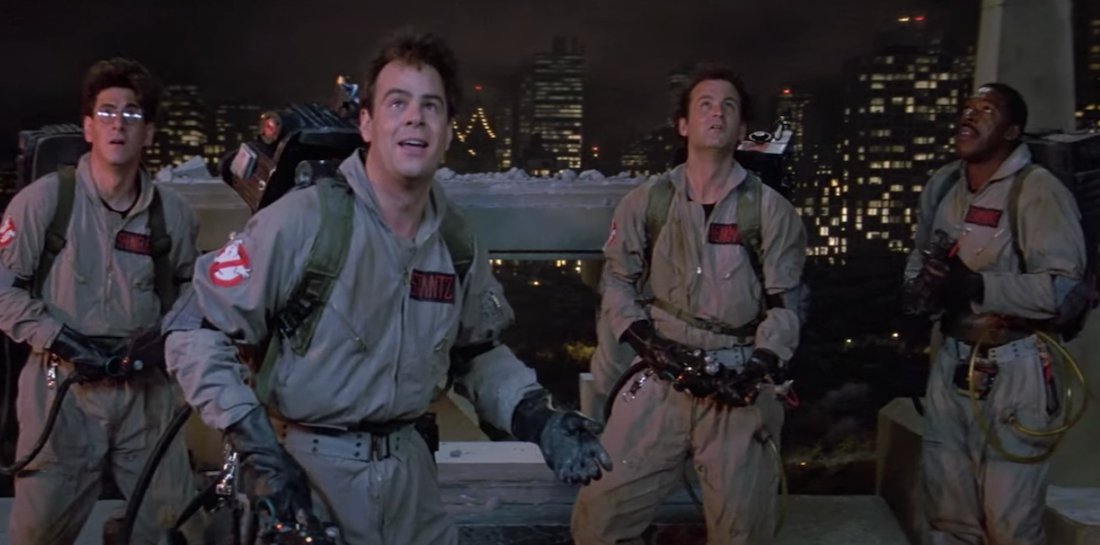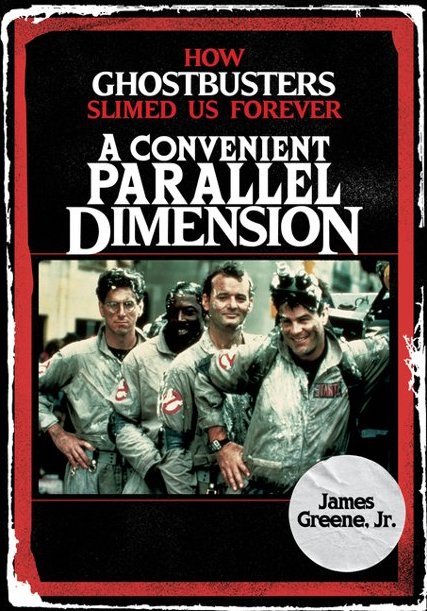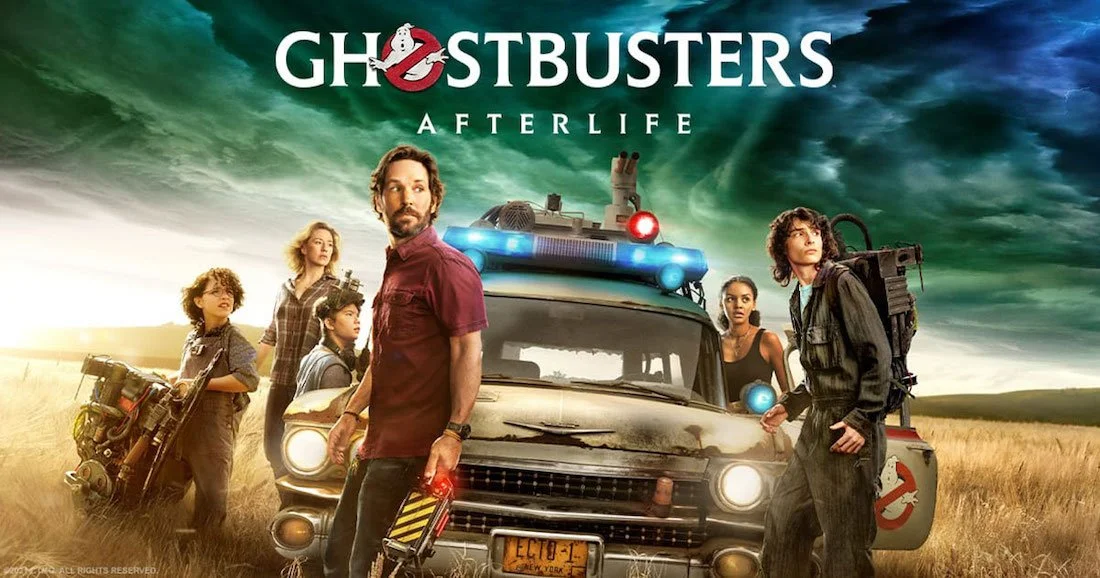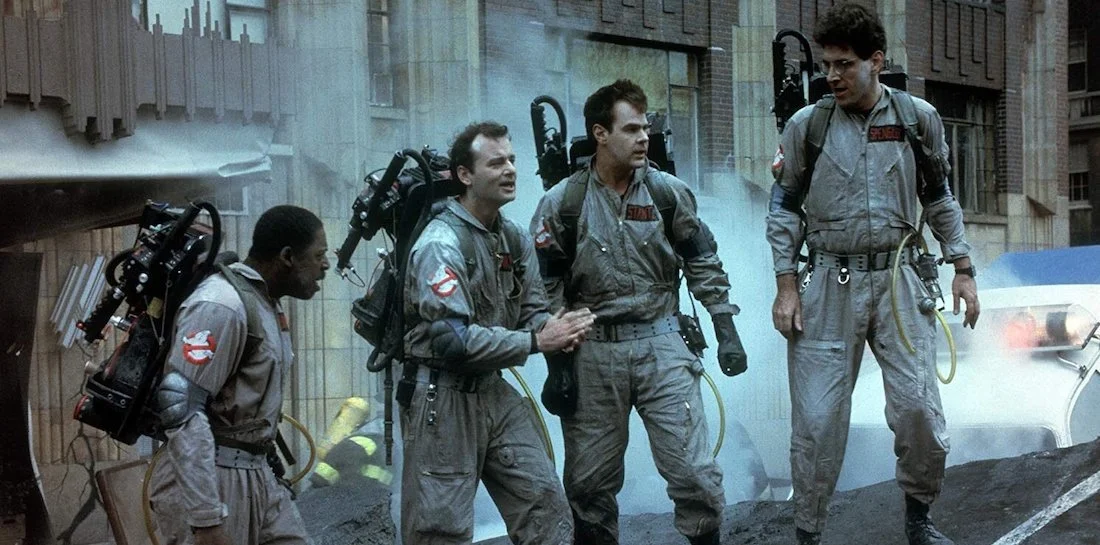Review: A Convenient Parallel Dimension: How Ghostbusters Slimed Us Forever
A Thorough History of Ghostbusters, Warts and All
I remember GHOSTBUSTERS being one of the first non-animated movies I repeatedly watched as a child. A majority of the humor went over my head at the time, but I remember taking a mental note of my parents laughing equally as hard as me. My parents never protested my requests for rewatching the movie but used my love of the characters to redirect me to watching some other faves of mine with the same actors, including THE GREAT OUTDOORS, WHAT ABOUT BOB?, and GALAXY QUEST. Today, I’m just as invested in learning about the production of movies as I am in watching them and can safely say that A Convenient Parallel Dimension: How Ghostbusters Slimed Us Forever earned its spot on my bookshelf.
A Convenient Parallel Dimension: How Ghostbusters Slimed Us Forever by James Greene, Jr. offers a thorough history of the Ghostbusters franchise from the haphazard production of the first to the behind-the-scenes struggles that came with the making of the sequels. Readers will learn about all types of production secrets–warts and all–including Dan Aykroyd’s wonky interdimensional space opera first draft, Ray Parker Jr.’s teenage girlfriend singing on the theme song, and Sigourney Weaver’s audit of Columbia Pictures after they claimed they earned no profit from the first Ghostbusters film and couldn’t pay her the 2.5% net profits she had in her contract.
Greene mentioned in a blog post on his website that he had “never worked this hard on anything” and this book puts the vast amount of research and time that he spent on display. A Convenient Parallel Dimension contains a wealth of information that fans of author James Greene Jr. have come to expect from his work. He previously wrote two books focused on the histories of The Misfits (This Music Leaves Stains: The Complete Story of the Misfits) and punk rock music (Brave Punk World: The International Rock Underground from Alerta Roja to Z-Off) and the overwhelmingly positive reviews for both of those apply to A Convenient Parallel Dimension, including how his books are well-researched and captivating. Any fan of the Ghostbusters franchise would enjoy reading the history of its inception. Still, even fans of the principal actors like Dan Aykroyd, Bill Murray, Harold Ramis, Sigourney Weaver, and Ernie Hudson, its storied director Ivan Reitman, or Coca-Cola—yes, the beverage company—would find a lot to love about the shared details about this time period of their careers and business.
Movie buffs will appreciate that Greene does not hold back on revealing the unsavory side of Ghostbusters history and the extra details make the reader grateful that this is not officially licensed. As we find out in the introduction, Greene was contacted about making his work officially licensed, but declined the offer knowing that “the caveat was that [his] manuscript would be subject to their approval.” Ghost Corps, Inc., the subsidiary of Sony Pictures that oversees the media franchise, likely would’ve nixed various bombshell mentions including the mention of 28-year-old Ray Parker Jr. bringing his 17-year-old side girlfriend and her high school friends in to sing the chorus of the theme song and the revelations of Bill Murray’s antagonistic behavior on and off the set of the Ghostbusters films towards the staff and others. Among some of the crazier displays Murray made, the one that stuck out the most to me entailed him picking up a plate and launching it out a seventh-story window at a photographer who took a picture of him near a buffet spread.
Director Ivan Reitman doesn’t fully escape the barbs as a quote directly from his wife Geneviève Robert makes it into the book calling his female roles “stupid” in defense of Sigourney Weaver’s performance stretching the scope of her “nothing character.” There’s a level of irony in this from a modernist lens due to Reitman’s daughter being actress/writer Catherine Reitman, creator of the smash CBC Television hit Workin’ Moms, often praised for its positive female representation. Nobody can deny the greatness that birthed the Ghostbusters media franchise as described throughout the book, but the greed and callousness of some of the major players involved are highlighted and may surprise some.
Dan Aykroyd’s idea for GHOSTBUSTERS went through multiple iterations and was influenced by many events including the death of his friend John Belushi, whom he wanted to costar in the movie with, Ivan Reitman’s suggestion for Harold Ramis to be brought in as a writing partner and costar, and the casting of Sigourney Weaver. The minimization of Ernie Hudson’s role of Winston Zeddemore looms large in the book as one of the most consequential changes. Greene lays out the rich history that Hudson’s character initially had in the script, but the bulk of his part was siphoned off to Murray and Aykroyd’s characters. Rewatching GHOSTBUSTERS II, Hudson has minimal screentime and is reduced to a voiceless lackey most of the time instead of feeling like an integral part of the Ghostbusters team. Hudson himself relents to “citing racism as a root cause,” but Greene gives enough context to fill in the blanks without a direct quote from Hudson being needed. Adding salt to the wounds of his role being pared down, Greene reveals that Hudson lost the role he made famous to Arsenio Hall in the The Real Ghostbusters animated series and didn’t get the respect of being informed directly.
Earnest moments make their way into the book like overcoming the addiction struggles of ‘70s Hollywood, alternate angles on the budding stardom of actors directly involved or considered to take part in the franchise, and the decades-long pursuit of greatness by Ivan Reitman—the son of Czechoslovakian immigrants. Not only did this book give me all the commentary a fan of this media franchise would want, but I learned enough about some other movies in the actors’ and director’s filmographies that I ended up discovering titles to watch and walked away feeling informed about other moments in pop history like Eddie Murphy’s budding stardom from 48 HRS. and insight into the untimely death of John Belushi.
Readers will walk away from A Convenient Parallel Dimension with a lot of new information and plenty of feelings. Bill Murray’s decades-long career feels threatened by the knowledge that he abuses people in his orbit at will unapologetically. Sigourney Weaver is reduced to a damsel love interest role in GHOSTBUSTERS II while being nominated for both Best Actress and Best Supporting Actress the same year. Ray Parker Jr. plagiarized parts of “Ghostbusters” from Huey Lewis. Dan Aykroyd didn’t seem to care whether they stole the name from a previous property by Filmation as they could pay them off. GHOSTBUSTERS finally made Harold Ramis the star he always wanted to be. These are just a few of the many facts readers will learn and, as a “ghosthead,” A Convenient Parallel Dimension truly encompasses what I never knew I needed from the Ghostbusters media franchise–their unfiltered, untold history. James Greene, Jr. undertook a large task of weaving the complete history of this franchise from Dan Aykroyd’s inception of GHOSTBUSTERS to Ivan Reitman’s legacy coming full circle with his son, Jason Reitman, writing and directing the latest entry to the franchise, GHOSTBUSTERS: AFTERLIFE and including many of the original movie’s actors the year before Ivan Reitman’s death. I am thoroughly impressed with this book and hope we see another media franchise tackled in Greene’s bibliography one day in the future.







